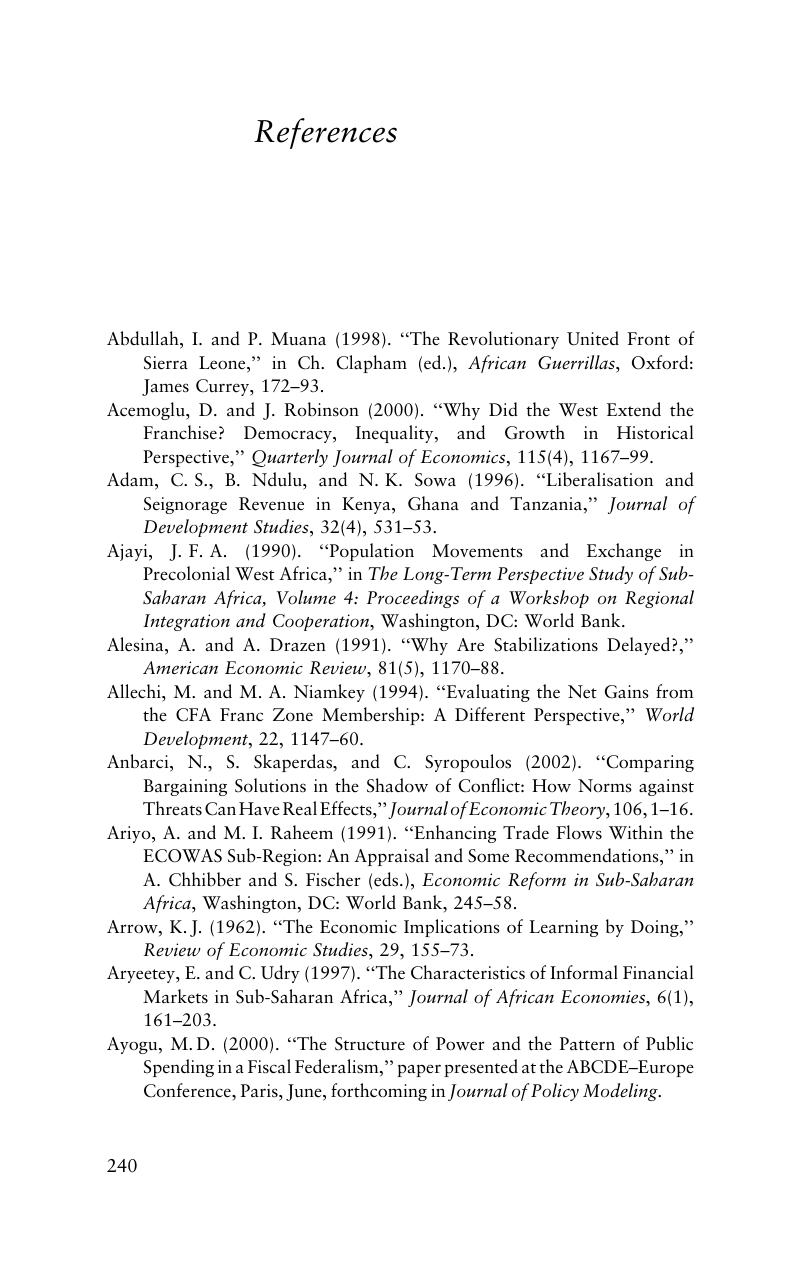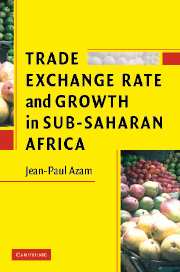Book contents
References
Published online by Cambridge University Press: 26 May 2010
Summary

- Type
- Chapter
- Information
- Trade, Exchange Rate, and Growth in Sub-Saharan Africa , pp. 240 - 254Publisher: Cambridge University PressPrint publication year: 2006



